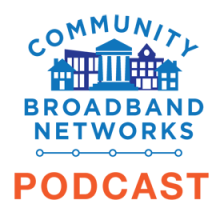Transcript: Community Broadband Bits Episode 261
This is the transcript for episode 261 of the Community Broadband Bits Podcast. Dane Jasper of Sonic joins the show to discuss how the company, publicly-owned infrastructure, and public-private partnerships. Listen to this episode here.
Dane Jasper: I think a city that adopts an open access, dark fiber model creates the greatest opportunity for a diversity in choices for the consumer and a diversity in the performance and price of services. That's the model that I think would be the most interesting.
Lisa Gonzalez: This is Episode 261 of the Community Broadband Bits podcast from the Institute for Local Self-Reliance. I'm Lisa Gonzalez. Dane Jasper from the internet service provider Sonic visits with Christopher this week. We've written about Sonic on MuniNetworks.org and how the company has used publicly-owned infrastructure to bring better connectivity to Brentwood in California. In this interview, Dane offers his perspective on different types of publicly-owned community networks, and how those networks affect a potential partnership with a company like Sonic. Before we start the interview, we want to remind you that this is a commercial-free podcast, but it isn't free to produce. Take a minute to contribute to ilsr.org. If you're already a contributor, thanks. Now here's Christopher with Dane Japer from Sonic.
Christopher Mitchell: Welcome to another episode of the Community Broadband Bits podcast. I'm Chris Mitchell, and today I'm speaking with Dane Jasper, the CEO and Co-founder at Sonic. Welcome to the show.
Dane Jasper: Thanks, Chris.
Christopher Mitchell: Dane, I suspect most of our listeners are familiar with Sonic. Although you serve three cities in California, your reputation is much wider and deeper than that. Maybe you can just enlighten those who haven't heard of Sonic. What is Sonic?
Dane Jasper: Sonic is an alternative access provider, so we're a regional, competitive, local exchange carrier and internet provider. Today, we offer broadband services in 125 California cities using copper technologies, VDSL, pair bonding, ADSL2+, and three cities, as you noted, with gigabit fiber to the home. We have a little over 400 employees and about 100,000 customers.


